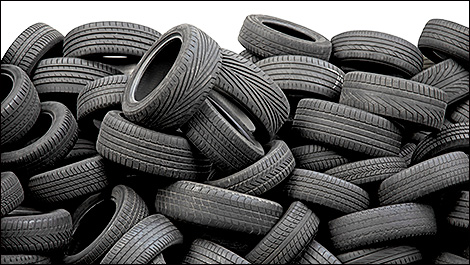Sep
9th
Stay connected Subscribe to our RSS feed
Another blog about tires? Yes, and there will likely be many more in the future.
The nature of this one pertains to the choices that people make and why. On a recent trip to Maine, I noticed a large number of late-model cars with replacement (non-original equipment rubber) tires from brands I had never heard of. I'm not the be-all end-all in the tire business, but I do know a few things...
Some of the brands I did recognize, such as Kelly and Nexen, but there were a large number I'd never seen, like Fierce and Geostar tires.
Of this, I take the following: Tire manufacturers have only, if nearly, price on which to sell their product.
Consider cars for a moment and compare a Toyota RAV4 to a Honda CR-V. There are many aesthetical differences, variations on lines, accents, chrome; all of these elements are visible to the naked eye and can sway buyers. There's an emotional tie-in.
Now, forget about the bodies and look at their tires. They're black, round, and have patterns imbedded in them. Exactly, nothing sexy here. No one gets aroused by rubber save possibly for me; I am currently seeking counseling for this condition.
I recently had a brief discussion with PR reps from a huge tier-1 tire company about the marketing challenge posed by the very nature of the tire. Once safety, performance, the green aspect, and wear resistance have been touched upon, there isn't much left to say. Some older tire brands speak of their storied history, but most consumers care only about costs.
And that's the bottom line. I always find it intriguing that we are so willing to cheap out on some things, while for others we are prepared to go flat broke.
Now, I'm not suggesting that lesser-known tire makers manufacture lesser tires, however, (and this is a general rule of thumb) we always get what we pay for.
In the case of tires, it may not be immediately noticeable that the $125 tire (vs. $175 tire) won't last as long, requiring earlier replacement at an additional cost or perform as well in wet conditions when 50% worn. Also, should a warranty claim need to be made, can we be sure that it will actually be considered?
I think top-tier tire manufacturers have to do what some carmakers are doing and that is move down scale. I'm willing to bet that a consumer is more likely to purchase a lesser Michelin or Bridgestone than an unknown brand so long as pricing is very competitive.
The nature of this one pertains to the choices that people make and why. On a recent trip to Maine, I noticed a large number of late-model cars with replacement (non-original equipment rubber) tires from brands I had never heard of. I'm not the be-all end-all in the tire business, but I do know a few things...
Some of the brands I did recognize, such as Kelly and Nexen, but there were a large number I'd never seen, like Fierce and Geostar tires.
Of this, I take the following: Tire manufacturers have only, if nearly, price on which to sell their product.
Consider cars for a moment and compare a Toyota RAV4 to a Honda CR-V. There are many aesthetical differences, variations on lines, accents, chrome; all of these elements are visible to the naked eye and can sway buyers. There's an emotional tie-in.
Now, forget about the bodies and look at their tires. They're black, round, and have patterns imbedded in them. Exactly, nothing sexy here. No one gets aroused by rubber save possibly for me; I am currently seeking counseling for this condition.
I recently had a brief discussion with PR reps from a huge tier-1 tire company about the marketing challenge posed by the very nature of the tire. Once safety, performance, the green aspect, and wear resistance have been touched upon, there isn't much left to say. Some older tire brands speak of their storied history, but most consumers care only about costs.
And that's the bottom line. I always find it intriguing that we are so willing to cheap out on some things, while for others we are prepared to go flat broke.
Now, I'm not suggesting that lesser-known tire makers manufacture lesser tires, however, (and this is a general rule of thumb) we always get what we pay for.
In the case of tires, it may not be immediately noticeable that the $125 tire (vs. $175 tire) won't last as long, requiring earlier replacement at an additional cost or perform as well in wet conditions when 50% worn. Also, should a warranty claim need to be made, can we be sure that it will actually be considered?
I think top-tier tire manufacturers have to do what some carmakers are doing and that is move down scale. I'm willing to bet that a consumer is more likely to purchase a lesser Michelin or Bridgestone than an unknown brand so long as pricing is very competitive.
 |
 The latest auto news, reviews, prices, product and vehicle releases.
The latest auto news, reviews, prices, product and vehicle releases.